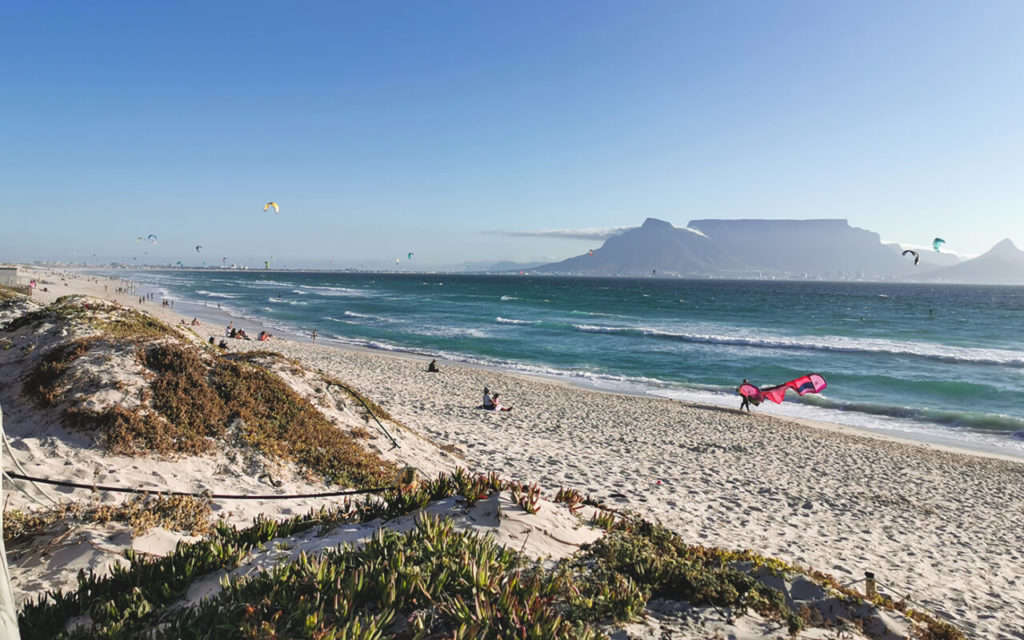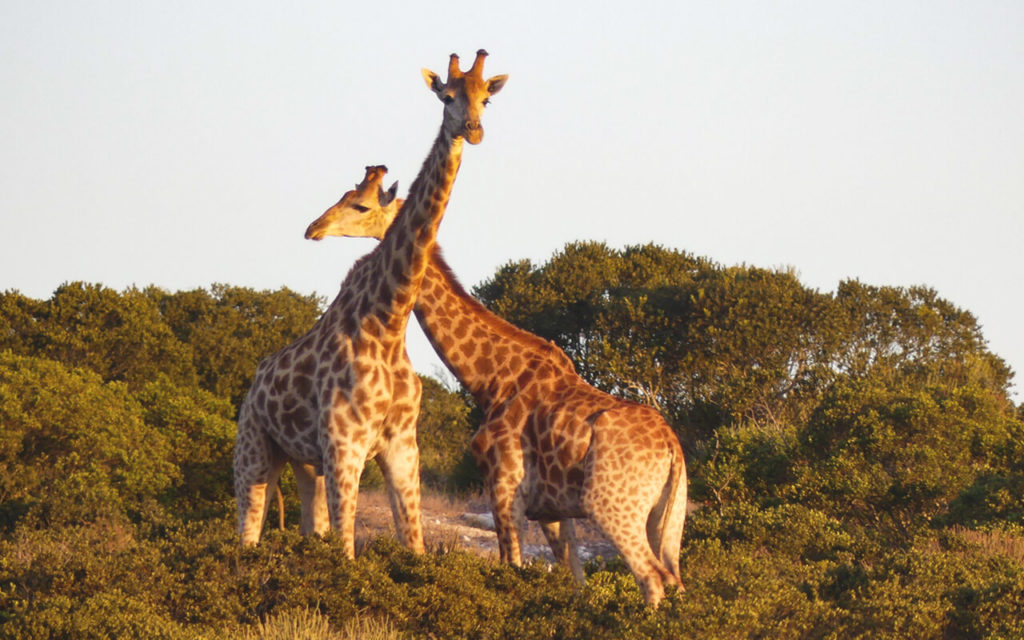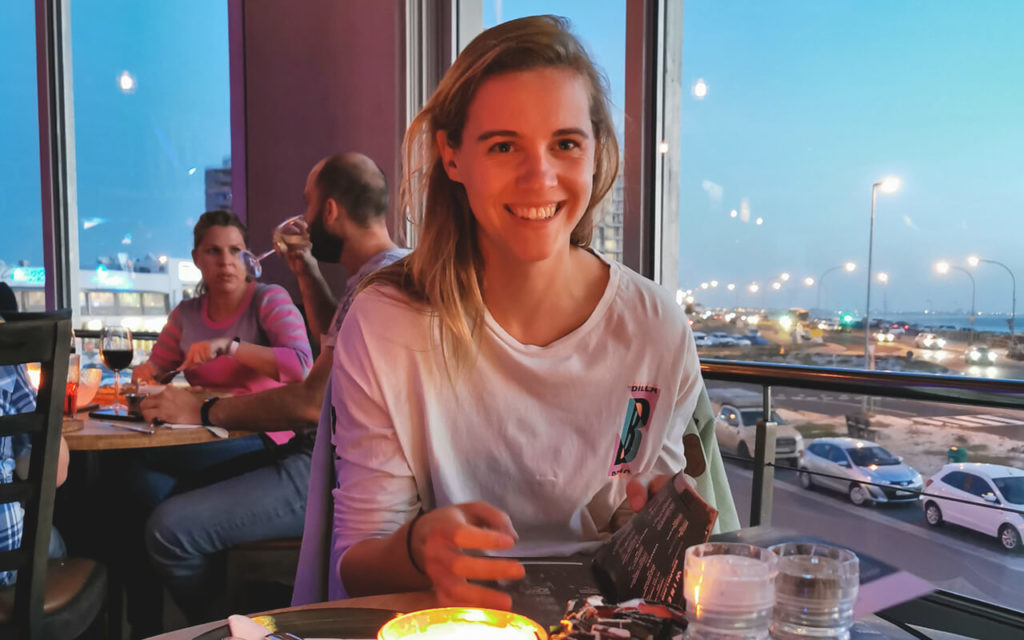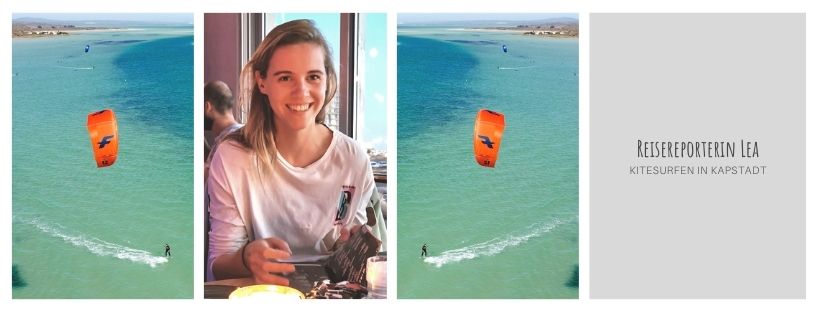Fancy a round of kitesurfing in Cape Town? Then today’s travel report is just right for you! In Cape Town, you can not only relax on the beach, hike up Table Mountain, marvel at sunsets, go on safari, or enjoy the city’s unique vibe, but also kitesurf.
The city is a true kitesurfing paradise and expects excellent wind forecasts. Our travel reporters Lea and Sebastian love windy places and have been kitesurfing themselves for over 8 years. They visited Cape Town for the first time in 2019 and are sharing their best kite spots and travel tips with you today. Have fun browsing!
What else you should know
- Best time to travel to South Africa
- Currency of South Africa
- South Africa Entry & Visa
- Round trip with a rental carcarcar
- The top Johannesburg highlights
- Northern Cape Round Trip
- Krüger National Park
- Panorama Route South Africa
- The beautiful Winelands
- Magical Garden Route
- What else you should know
- Kitesurfing in Cape Town
- The best time to kitesurf in Cape Town
- Learn to kitesurf in Cape Town
- The best accommodations for kiters in Cape Town
- The wind in Cape Town
- What kite sizes should I bring to Cape Town?
- Kitesurfing in Cape Town – Kitespots in Table Bay
- Kitespots in the surrounding area Cape Town
- This is what a typical kitesurfing day in Cape Town looks like
Kitesurfing in Cape Town
Kitesurfing in Cape Town – anyone who’s been there once will definitely come back. We heard this from many people before our first kitesurfing trip to Cape Town. And what can we say, it turned out to be true: after our first visit in 2019, we immediately knew it wouldn’t be our last trip to Cape Town.
Kitesurfing in Cape Town is an absolute dream: high temperatures, excellent wind probability, and plenty of things to do even if there’s no wind. There’s also a very large selection of high-quality restaurants where you can enjoy excellent food and pay significantly less than in Germany.

The best time to go kitesurfing in Cape Town
In Cape Town, the seasons are exactly the opposite of those in Germany: spring in Cape Town begins in October/November, midsummer is from December to the end of February, and autumn is from March to the end of April. These months also have the highest probability of wind. Cape Town is famous for its “Cape Doctor”: this is the name given to the southeastern trade wind, which is further strengthened by thermals in the summer months.
The wind season in Cape Town begins in early November and ends in March. Statistically, the period from December to the end of February is the windiest. However, this is also when Cape Town is busiest, which is why it can sometimes get crowded on the water. We have found that there are the most kitesurfers in Cape Town, especially during the King of the Air, the largest kitesurfing competition in the world.

During this time, bars and restaurants are full in the evenings, and you’ll meet many familiar faces from the kitesurfing industry. If you like the hustle and bustle and want to immerse yourself in the nightlife in addition to kitesurfing, we recommend December and January. If you prefer space on the water, you should definitely consider November or March. There are still plenty of windy days, but the water is much quieter. More about the travel season here: Best time to travel to South Africa.
Learn to kitesurf in Cape Town
Learning to kitesurf in Cape Town is quite challenging, as the water gets deep right away, the wind is usually very strong, and the waves can be high. However, there are several kite schools in Blouberg, all of which have very good reviews. We would still recommend taking a kitesurfing course at a kite school in Germany.
There, you have the advantage that the courses are held in German and you find much more moderate conditions. Once you’ve mastered the basics, nothing stands in the way of your first kitesurfing trip to Cape Town.
The best accommodations for kiters in Cape Town
Most kiters book their accommodations either in Dolphin Beach, Sunset Beach, Blouberg, or Big Bay, as all the kitesurfing spots are located here. We stayed in Blouberg twice because it has the largest selection of bars and restaurants and is simply the busiest. Moreover, depending on your choice of accommodation, the kitesurfing beach is within walking distance.
In Blouberg, you’ll find many surf hostels perfectly suited to the needs of water sports enthusiasts. They offer storage for kitesurfing gear, facilities for washing and drying wetsuits, and a large shared kitchen.
We’ve already stayed at Tabu House twice, which can no longer be described as a classic hostel: it’s very well-equipped and has apartments with private bathrooms and kitchens. We would definitely go there again and again because it’s within walking distance of the beach and you always meet nice people there.
The Wind in Cape Town
The Cape Doctor usually builds up slowly throughout the day in Cape Town. It often starts in the late morning and gets stronger the later it gets. Accordingly, kitesurfing in Cape Town doesn’t necessarily mean only going out in strong winds. You can also find moderate kitesurfing conditions in Cape Town, and then you have the advantage that the water is much quieter. Most kiters in Cape Town go out in the late afternoon, as the wind is at its strongest then.
We usually get to the beach around 1 p.m. and were able to get out on the water with a 10 sq m kite. After a lunch break, we went back out on the water in the late afternoon and had fun with a much smaller kite.
Strong wind days in Cape Town are usually announced by a blanket of clouds on Table Mountain: if the wind forecast is promising and there are already clouds visible on Table Mountain in the morning, you can assume that it will be one of the famous Big Air days in Cape Town.

The wind forecast from Windfinder is usually significantly lower than the actual conditions. Because the southeast wind is further strengthened by thermals, you can easily expect a minimum of 20 knots with a forecast of 15 knots.
What kite sizes should I bring to Cape Town?
In principle, you can find everything from light wind to strong wind conditions in Cape Town. However, the size of the kite you need depends on the time of day. While you can usually kitesurf in Cape Town with a kite size between 12 and 9 square meters around midday, you can’t avoid a small kite, between 9 and 6 square meters, in the evening.
Accordingly, a small kite should definitely be in your kite gear: I weigh 80 kg and would take either an 8 square meter kite or a 9 square meter + 7 square meter kite with me on my next trip to Cape Town. Theoretically, these kite sizes would even be sufficient if you have the patience to wait until late afternoon.
A larger kite is still worthwhile, especially if you want to go to other kite spots, such as Shark Bay or Langebaan. The wind is usually much weaker there, so you need a kite of around 12 square meters.
Kitesurfing in Cape Town – Kite Spots in Table Bay
The kite spots in Table Bay in Cape Town are all located on the same beach, which is why they only differ from one another in small ways. At all spots, the water gets deep right away, and the wind usually blows sideshore from the left (SE).
Depending on the swell, the spots can experience small to very high waves. The tide also has a major influence on the distance between the waves and their size: at low tide, the waves break further out, creating perfect kickers for high jumps. They are also much more orderly, which is why most wave kiters go out on the water even at low tide.

Kiting in Sunset Beach
The wind in Cape Town always builds from south to north, meaning the wind arrives earliest at the spots closer to Table Mountain. Sunset Beach is the southernmost kite spot in Table Bay, which is why you can get out on the water here the earliest.
Especially on days with a poor wind forecast, it’s worth heading to Sunset Beach, as this is when you have the best chance of kiting in Cape Town. Please note that the wind can still be slightly offshore early in the day, making it very gusty. There are plenty of parking spaces at Sunset Beach, although these can quickly sell out during peak season.
Kiting at Dolphin Beach
Dolphin Beach is located between Sunset Beach and Blouberg. As with the other spots in Table Bay, the huge beach offers plenty of space to set up and launch your kite. There is a large parking lot right on the beach.
Kiting at Blouberg
Blouberg was our home spot during our time in Cape Town, as it is within walking distance of the Tabu Hostel. There are parking spaces right on the beach, giving you a great view of the kite spot from your car. Blouberg is also the host venue for the world’s largest kitesurfing competition, the King of the Air.
The wind always develops a little later here in southeasterly conditions than at Sunset Beach. However, around midday, conditions are still moderate, allowing for a relaxed session with a 12- or 10-meter kite.

Kiting in Big Bay
Big Bay is a very nice place for kitesurfing in Cape Town because there is usually slightly less wind here than at the other spots in Table Bay. The bay is protected by two large stone jetties, which means there is shallow water behind it. The spot is also very popular with wave kiters, as the waves break much cleaner thanks to the stone breakwaters than in Blouberg or Sunset Beach.

Kite spots near Cape Town
Kitesurfing in Shark Bay
The best kitesurfing spot near Cape Town for beginners is definitely Shark Bay, which is why we’ve also filmed a kite waterstart tutorial here. Don’t worry—there are no sharks there. Shark Bay is just a few minutes from Langebaan. Both spots can be reached in just over an hour via a very wide highway. Besides this, we once saw giraffes on the way back, which was a truly unique experience.

The kite spot is characterized by its huge sandbank, which is why you can still stand 1km out. Even when it’s really gusty in Cape Town, you rarely get winds exceeding 25 knots here. The wind is usually a bit weaker here than in Langebaan. The water here is pleasantly warm and has a beautiful turquoise color.

Kitesurfing in Langebaan
Langebaan is located just a few minutes from Shark Bay. The spot works best in southeast winds. Conditions in Langebaan are significantly more moderate than in Cape Town itself: although it does get deep right away, you’re in a protected bay, which is why there are usually almost no waves. The wind there is amplified by a channel, which is why it is significantly stronger than in Shark Bay.

This is what a typical kitesurfing day in Cape Town looks like
The best way to start the day in Cape Town is with a comprehensive breakfast in one of the numerous restaurants. Especially in Blouberg, there are many excellent cafés and restaurants where you can enjoy yourself. You usually spend no more than €5-€10 for a comprehensive breakfast with a coffee. After breakfast, it’s worth getting those tired bones moving from the kite sessions of the past few days, which is why we mostly did a bit of stretching.

The wind often picks up around midday, which is why we’re often at the spot around 12 o’clock. However, we always follow the tide and try to go out at low tide whenever possible, as the waves are much cleaner then. Because the wind is usually a bit lighter around midday and then gradually increases, you can start off relaxed and gradually improve your skills with jumps.
After our first kite sessions, we often drove to Big Bay for lunch. We almost always got something in Kauai, as the food is fresh, healthy, and high in protein. We usually met the whole kite community there. After a lunch break, we headed back to the kite spot for the second session.

In the afternoon, the wind usually picks up significantly, which is why we were able to fly a 7m² or 8m² kite. Cape Town is the ideal place for high jumps and kiteloops. We were often on the water until sunset and enjoyed every minute. Back at the hostel, after showering, we went straight to dinner. Blouberg has a wide selection of restaurants, and almost every one offers delicious food at a reasonable price.
We can especially recommend the following restaurants:
- Colala: Sushi, Indian, and Asian
- Primi: Italian
- Jerry’s Burger Bar
- News Café
Pakalolo is the perfect place to stop for a drink and round off the evening with like-minded people.

